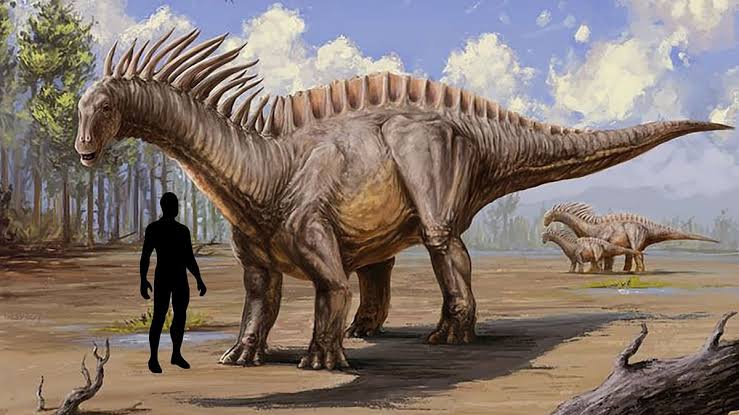
Transforming from a sizzling expanse in India's Rajasthan state, the Thar Desert unveils its past as a
tropical shoreline along the Tethys Ocean during the Mesozoic Era. Dinosaurs and marine life once
flourished here.
A new discovery, hailing from 167 million years ago, offers insights into the dicraeosaurids, a dinosaur
group with moderate-length necks that feasted on vegetation. This specific find, labeled Tharosaurus
indicus, not only marks the first discovery of its kind in India but also claims the title of the oldest ever
documented in the global fossil record.
Named in honor of its desert birthplace and Indian origin, Tharosaurus indicus comes from an all-Indian
research team. They assert that examining fossils from the Indian subcontinent is pivotal to
comprehending Earth's ancient history.
These dicraeosaurids belong to the diplodocoid sauropod group, known for their elongated bodies and
necks. These creatures, spanning the Middle Jurassic to Early Cretaceous periods, are abundant in fossil
deposits. Unique for their neck spikes, dicraeosaurids have been found in Africa, the Americas, and
China. However, India had not previously unveiled such fossils.
Previously, it was believed that India solely housed the predecessors of diplodocoids. Nonetheless, in
2018, a joint effort between the Geological Survey of India and IIT Roorkee began systematically
investigating fossils near Jaisalmer in the Thar Desert. The excavations bore fruit with extinct hybodont
sharks, marine bony fish, and eventually, dinosaur fossils, including Tharosaurus indicus.
Differing from its peers, this dinosaur exhibits elongated neck bone depressions, neural spines
resembling upward neck spikes, and heart-shaped tail bone fronts. Furthermore, this discovery
challenges existing notions about sauropod habitats in ancient India.
According to Debajit Datta, a co-author of the study, Tharosaurus indicus doesn't just represent
dicraeosaurids but also provides the earliest global evidence of diplodocoids.
Tharosaurus's discovery alongside Barapasaurus and Kotasaurus in central India's Early Jurassic Kota
Formation indicates that India played a substantial role in the development of neosauropods, vegetarian
dinosaurs with long necks that reigned as colossal land animals. This conclusion gains credibility when
considering the continents' positions during the Middle Jurassic.
Indohyus and Cambaytherium, vital in tracing whale and horse origins, exemplify other vertebrate group
origins in India. However, despite India's rich fossil resources, a shortage of vertebrate paleontologists
and obstacles like mining, forests, funding, and limited jobs impede comprehensive study.
Nonetheless, hopes for safeguarding geoheritage sites and essential fossil locations in India are fueled
by recent federal proposals, as articulated by Dr. Bajpai.
∎